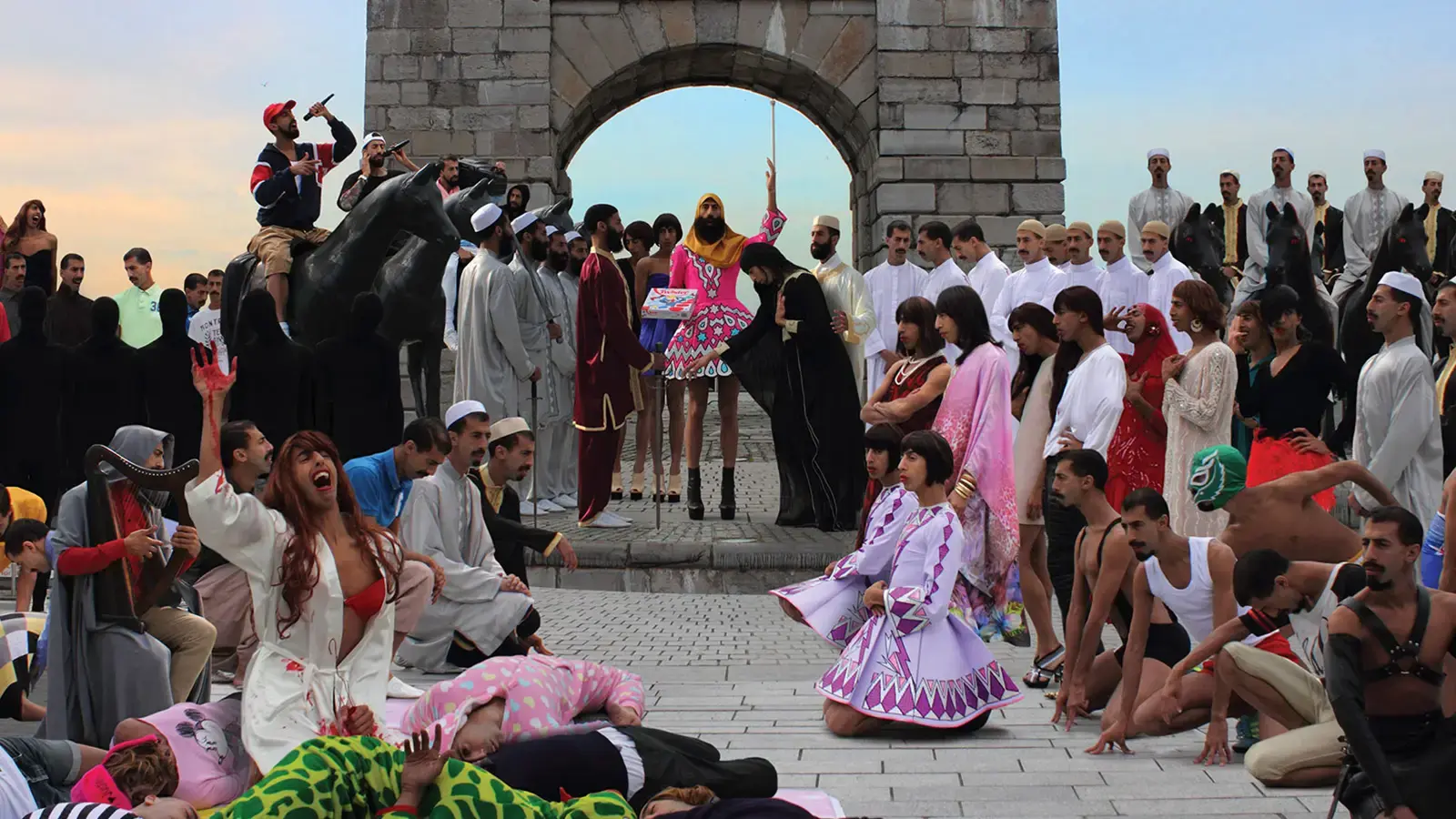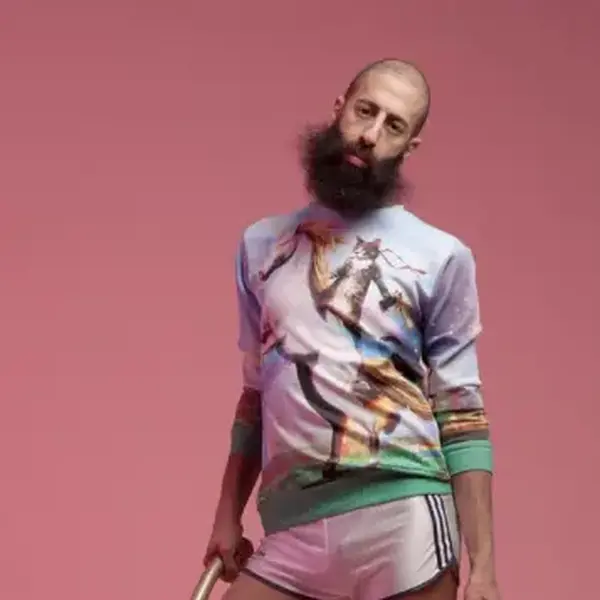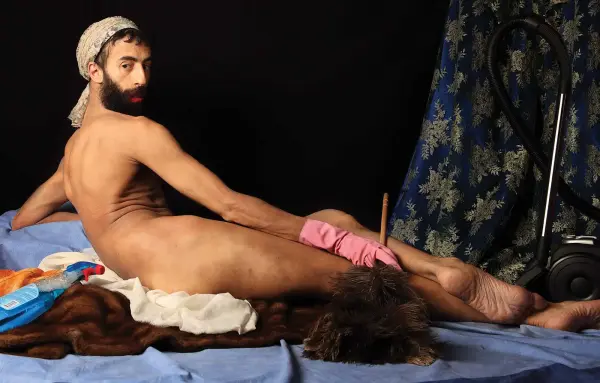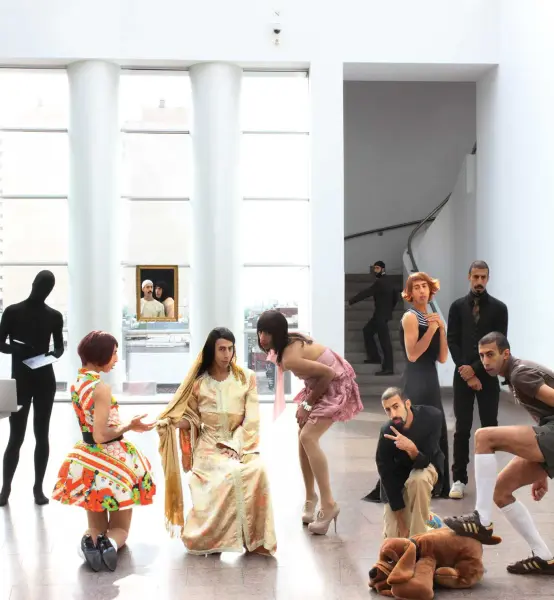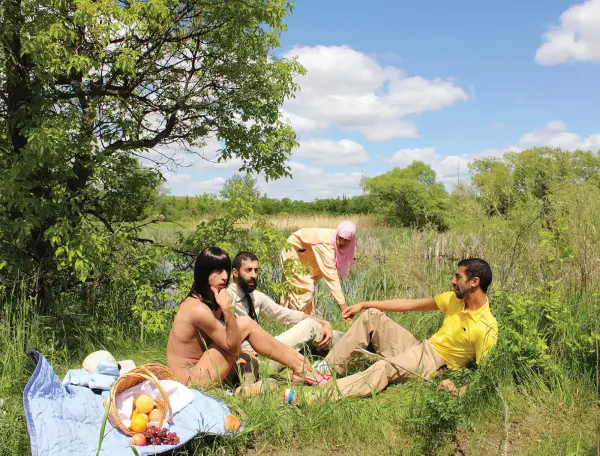His and Other Stories
Assuming the multiple roles of artistic director, photographer, and performer, 2Fik stages elaborate tableaux that often re-enact familiar compositions derived from famous paintings. Toying with reality, his constructed images destabilize the viewer’s assumed points of reference, playfully orchestrating scenes that comment thoughtfully on current society.
Born in Paris to a Moroccan Muslim family, 2Fik moved to Montréal in 2003. His encounter with the city’s multicultural environment inspired him to examine issues of identity and its socio-political ramifications. Drawn out of this diverse backdrop, the recurring characters featured in his photographs are all interconnected and stem from the artist’s life experiences and personality: Abdel, who was born in Casablanca, moved to Montréal, and now works as a property manager, turning to religion out of loneliness rather than genuine faith; Fatima, who abandoned her university studies to follow Abdel as his good wife and remains devoted to him even though they married out of family pressure, not love; Kathryn, an overconfident, spoiled young woman from Montréal’s West Island, who is juggling many lovers, including Abdel; and Firas, who fled his native country and asked for refugee status in Canada, motivated by a well-founded fear of persecution based on his sexual orientation.
These are only a few of the lively, fictional individuals embodied by 2Fik in his beguiling photographs. Dismantling stereotypes, they compel viewers to question their own sense of self and reflect on acquired notions of gender, sexuality, belief, universality, and difference. 2Fik first explored these topics by diving into the intimacy and daily life of his characters in the series 2Fik Or Not 2Fik (2005–2009), and later by positioning them into well-known paintings reimagined from a contemporary perspective in his second series, 2Fik’s Museum (2010–2012). In 2013, 2Fik began a new series of site-specific performance-based photographs, restaging history paintings in order to consider national identity narratives.
His and Other Stories offers a survey of these recent bodies of work to examine cultural legacies and identity constructs. The exhibition’s centrepieces are his latest compositions that reconfigure allegorical representations of nationhood. A new work, created for this exhibition, reinterprets Benjamin West’s 1770 painting, The Death of General Wolfe, an emblematic example of Canadian history represented through a colonial lens. The original dramatically depicts the General’s fall during the 1759 Battle of Québec, celebrating him as a hero and a symbol of British dominance. Subverting this patriarchal, whitewashing viewpoint, 2Fik’s vibrant characters of mixed genders, ethnicities, and faiths infuse new meaning into this iconic image. Raising irreverent questions, his critical reinterpretation disrupts nationalistic discourses, opening conversation on today’s pluralistic realities. Shot at Honest Ed’s just before its demolition, the photograph recalls this site’s significance to Toronto and its diverse inhabitants, honouring both present and historical loss, mourning across time and cultural dimensions.

